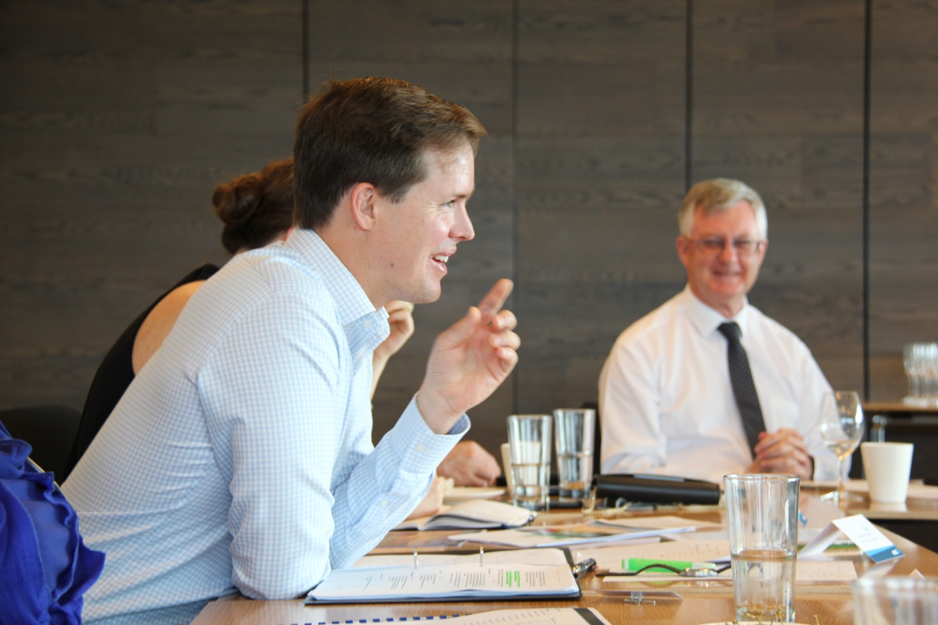Efforts to understand climate risk within companies and across the economy are not about managing climate through the legal system, usurping the role of government, or forcing companies to go it alone on saving the planet. Quite the opposite. They are about making companies, investors, governments and communities aware of the risks and opportunities and better equipped to respond to them.
Last month the Centre for Policy Development brought together leaders from across the Australian and international economy for a discussion about climate change. The group we convened were not motivated by ideology, politics or belief. They were asked to take stock of where we are on climate risk and consider what the next set of priorities should be.
The headlines have focused on Ken Hayne, who reinforced what investors, regulators, the G20, scientists, economists and lawyers have said for some time. His key point was we are not helpless in the face of climate physics, decisions taken offshore, the complexity of managing exposures at home, or an increasing risk of legal liability. More effective firm and system-level responses are essential.
Mr Hayne was joined at the roundtable by leaders from Australia’s biggest banks, insurers, investors, businesses and superannuation funds, our financial regulators, the Bank of England, the Reserve Bank of New Zealand, and the Investor Group on Climate Change. Current and former senior government officials were there too.
The conclusions from the discussion were clear and uncontroversial. Climate change impacts are upon us now. Responses thus far are insufficient to understand, manage or respond to the physical and transition risks ahead. The way forward requires greater collaboration across the public and private sectors. Australia’s economy is acutely exposed, including to measures by investors and trading partners stepping up their focus on climate, and Australian companies trading abroad face growing retaliatory risks. A combination of physical and transition risks is inevitable due to temperature rises locked in and actions being taken offshore.
These conclusions are significant partly because of the group from which they emerged: decision-makers from across Australia’s financial system who see this as a top-tier issue for their institutions and for the economy at large. There were practical steps suggested on how to implement these conclusions so that decision-makers are better equipped to shoulder their responsibilities, work through the scenarios, and make sophisticated decisions in a fragile and vulnerable marketplace.
It would be a mistake to reduce these conclusions or Mr Hayne’s remarks to a preoccupation with legal action. This is precisely what everyone is trying to avoid. A cursory look at education courses run by the Australian Institute of Company Directors or TCFD disclosures of leading companies suggests directors are incorporating climate risk into policies, processes and risk maps. Our conclusions put the TCFD framework centre stage. They reinforce the importance of companies thinking about climate in the context of scenarios. They don’t challenge the right of government to set climate policy, but ask government to coordinate efforts to manage a problem staring us in the face. We asked for a joint national mission.
This doesn’t mean starting from scratch. There are separate initiatives being driven by industry, regulators and government that can be joined up. Combining the best expertise and data will allow us to stress test the economy as a whole, agree a set of adaptation priorities, examine our disaster preparedness, and ensure our infrastructure, cities and communities are more resilient. The United Kingdom is a good example of a country conducting economy-wide stress testing of climate scenarios, with the Bank of England playing a central and coordinating role. This is happening under a Conservative government at a time of grave policy and political upheaval.
In September, the Global Commission on Adaption on which Macquarie Bank CEO Shemara Wikramanayake sits made similar recommendations to those that emerged from our roundtable. Convened by 20 countries, the Commission called for “a revolution in understanding, planning, and finance that makes climate risks visible, incorporates these risks into all decisions, and releases public and private financial flows.” They found that “investing $1.8 trillion globally in five areas from 2020 to 2030 could generate $7.1 trillion in total net benefits”.
For anyone in bushfire-affected parts of Australia this week it has been impossible to escape climate-related risks. Schools have closed, offices have been evacuated, houses have been destroyed and lives have tragically been lost. Sadly, there is worse to come. Climate change is a ratcheting risk that will touch every part of Australian society. Unlike other countries, we aren’t working together to map system-level risks, opportunities and responses. That’s what the roundtable was about, not “lawfare”.
This piece was published in the Australian Financial Review on 13 December 2019. You can read more about CPD’s climate roundtable here.




